Vintage chronograph. Those two words combined tend to perk the interest of any watch collector. Whether it’s the NASA approved capabilities of a cal. 321 Speedmaster, the eccentric asymmetry of cal. 15 Heuers, the military ruggedness of a Lemania 5100 Orfina or the no-fuss functionality of a Seiko 6139, there is just something about the added complexity of a chronograph that when mixed with the style of the 60’s and 70’s (or earlier) that draws us in. Throw in the interactive aspect of starting, stopping and resetting a chronograph, feeling the snap of the pushers, seeing the second-counter jump into action… and you have watches that are as addictive to wear as they are to operate.
Today, we’re not looking at a vintage chronograph, but rather a new chronograph that draws closely from a vintage piece, the Longines Heritage 1973 (for a history of Longines, click here). When first announced shortly before Basel 2013, the Heritage 1973 created quite a buzz. While it is a reinterpretation of the Longines Conquest chronograph from 1973 (of which there appears to be but one photo of on the internet, and everyone has already published it, so I’ll avoid that here), what immediately caught most people’s attention was that it shared a case design with a well-known, but under-appreciated Heuer, the Camaro.
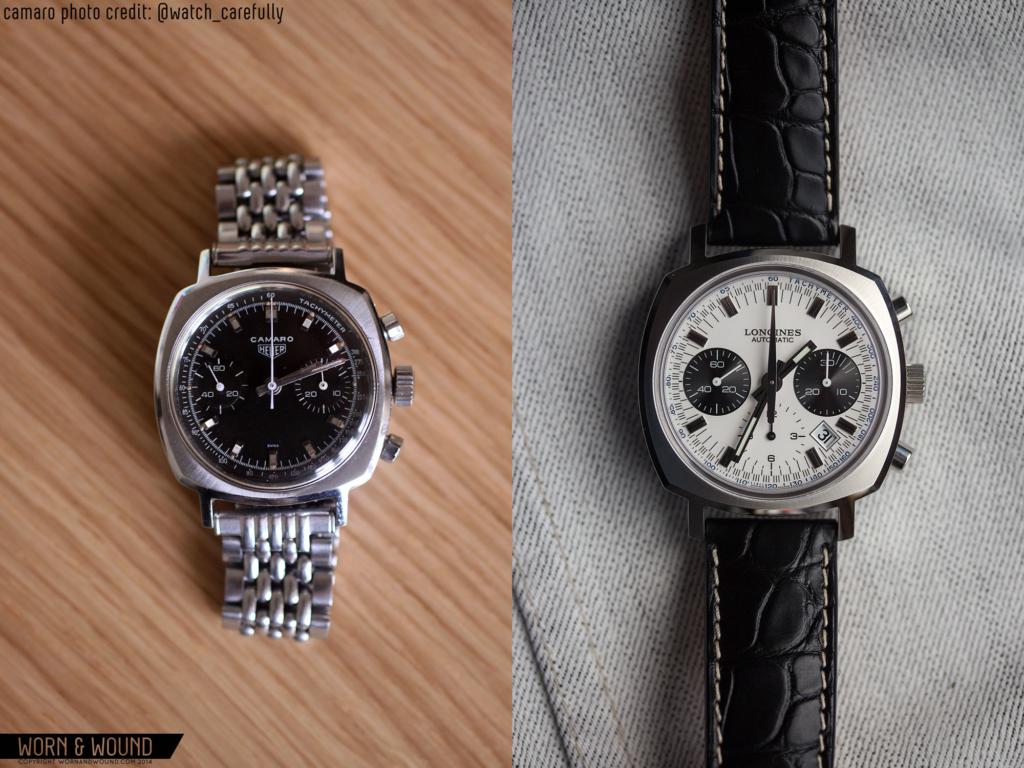
First released in 1968, the Camaro featured a distinctive cushion case that rides the line between sport and dress. Compared to its more famous brother, the Carrera, the slightly bowing curves and fine case finishing of the Camaro made it stand apart. It featured various Valjoux movements in its life cycle, some with two registers, others with three, some with date, all of which were hand wound. It is perhaps a less popular model, because it was overshadowed by Heuer’s automatic chronographs that were released shortly after in 1969, and had less name recognition than the already established Carreras, having been first released in 1963. Nevertheless, from a vintage perspective, they are unique watches with a lot of charm, and though not inexpensive, can be found for under $5k.
But, back to Longines… While it shared a case with the Camaro, the 1973 Conquest sported the in-house Longines caliber CH30, a hand wound column wheel chronograph. The Panda dial coloration with subtle blue tachymeter and extra-broad second counter spoke to the style of the era, but had a more aggressive look than the Camaro. For their Heritage line, which takes cues from their archives, sometimes exactly, other times interpretively, Longines captured the aesthetic of the original, but modernized it in the right ways to make it a great new sport watch.
At a glance, it might look the same, but they in fact enlarged the case to 40mm from about 37mm and powered it with the very cool L688.2 movement, which is an automatic column-wheel chronograph exclusive to Longines. Coming in at $3,250 the Heritage 1973 is a pricy piece, certainly in the accessible luxury range, but in the scheme of the retail watch market is competitively priced. It’s also one of the few entry-level Swiss made automatic column-wheel chronographs out there (all made by Longines), and features the exceptional build and finishing one would expect at this price.
Longines Heritage 1973 Review
 Case: Stainless Steel
Case: Stainless Steel
Movement: Longines L688.2
Dial: White w/ Black Sub-dials
Lume: Yes
Lens: Sapphire
Strap: Alligator
Water Res.: 30m
Dimensions: 40 x 46.7 mm
Thickness: 14.4 mm
Lug Width: 20 mm
Crown: 6 x 4 mm push/pull
Warranty: yes
Price: $3,250
Case
There are many highlights to the Heritage 1973 and the case is definitely one of them. Coming in at 40 x 47.6 x 14.4mm (to the top of the box sapphire crystal) it is a tall-medium sized watch, but a sizable step up from the models of 60’s and 70’s. More often than not, when a brand creates a vintage inspired design, but increases the case size, it is done so with a heavy hand, leaving us aching for the original proportions. Here, it works perfectly. The elegant geometry of the cushion case, which is a wonderful mix of subtle flowing surfaces and perfectly sharp edges and points, deserves the embellishment of a few extra millimeters. Naturally, the larger automatic movement needed the case to grow, but I think it really added to the overall look and feel of the watch.
The design itself is simply charming, and while not a case shape one finds often, not so different as to be jarring or odd to wear. The “cushion” shape is clear and pronounced, with arcing lines that connect at four sharp points creating a squared form. The lugs protrude directly out of the side and are perfectly straight. Unlike typical cushion cased divers, the design here is quite sharp and even a bit flat, giving it a dressier look, which is further brought out by excellent finishing.
On the top, which is ever-so-slightly curved, the surface has burst brushing going from the center out. this has a very different optical effect than straight brushing, giving it a more dynamic and opulent reflection. The edge of the top-surface is then chamfered, polished and perfectly sharp; meeting the next segment with a little ridge, giving the whole watch a faceted look. The sides are then mirror polished continuing the sheen. Definitely more decadent than what we typically look at, but quite alluring, this finish is extremely eye-catching. The only downside is that it pics up fingerprints with no end, which is a bit annoying on a chrono you will want to play with.
On the right side of the watch are the chrono pushers at 2 and 4 and the main crown. The pushers are straight cylinders in polished steel; simple, classic and effective. The crown is nice and beefy at 6 x 4mm with deep teeth and a Longines logo on the flat side. It’s a push-pull crown, so you can still manually wind the watch. The left side is bare save an indented pusher at about 10. This is used to advance the date.
Flipping the watch over, you have a fairly basic screw-down display case design, with a 25mm diameter window. Around the edge are basic details, and within you have a view of the L688.2 movement, which is great to look at. We’ll discuss it more a section below, but chronographs are always enjoyable to see, column-wheels even more so, and this one is fairly decorated.
Dial
If your eyes manage to unglue themselves from the case, you can begin to get lost in the dial. There are two variations of the Heritage 1973, a black with silver sub-dials option, and white with black sub-dials, or Panda variety. While I’m certain the black with silver is attractive in its own right, it’s hard to turn down a well executed Panda dial. In terms of design, they stayed very true is respects to the original Conquest, with the addition of a 3rd sub-dial and a date window. A third sub-dial might sound like a big change, but the execution is clever, so it’s more subtle than you’d think.
The primary index consists of blocky applied markers in polished steel, omitted at 3, 6, and 9, each with a black line running down its center. Between them is a fairly busy set of lines for the minutes and 1/4 seconds. The design here places the smaller 1/4 sec lines outside of the minutes/second markers. It creates a staggered index that, in my mind at least, is reminiscent of a checkered flag…certainly it’s similar to designs scene on other racing chronographs from the period, like the Speedmaster MKII racing dial. Though busy, it works well on the dial, contrasting the applied markers with a more aggressive element.
The outer edge of the dial has a tachymeter in dark blue, which is authentic to the original. I love this detail. Though I’ve yet to use a tachymeter in a real life situation, it’s necessary to include on a racing chronograph, and the execution here is very nice. The blue used is subtle too, easily looking black at a glance, but overall feeling softer than black would have.
The 1973 features 3 sub-dials, a 30-minute counter at 3, a 12-hour counter at 6 and the active seconds at 9. The original just had sub-dials at 3 and 9, so they kept those two black with concentric circular graining, giving them a lot of presence and some texture, and cleverly left the 6 sub-dial flat and white. Up close, all three are easily read, but from a distance, only the black dials are visible. So, when someone sees this on your wrist, it will look like the classic 2-register design. Simple, but effective. The font and index design of the sub-dials was kept the same as the original, including the slighty quirky elongated lines for the first five minutes on the 30-minute counter.
Having the hour register adds to the overall functionality and usefulness of a chrono. Rarely when I time something in daily life (traveling from a to b, a meeting, etc), is just a 30-minute counter sufficient. Why they don’t change minute registers to count to 60 when developing new movements is beyond me (Sinn does it on their EZM13 and U1000 chronos… just saying), but at least having the hour with half-hour increments gets the job done.
Between 4 and 5 is an angled date window with a black date on a white surface… This is likely to be the only point of contention on the 1973, as it’s a bit of a forced implementation. As far as I can tell, this is an ailment that effects all Swatch group brands including Omega (perhaps not above in the world of GO, Blancpain, Breguet, etc…). If the movement can have the date, they seem to find a way to squeeze it into the dial, even if it really doesn’t need to be there. Sure, dates are useful, but when it doesn’t belong, it just doesn’t belong.
Unfortunately, on the 1973, it crowds an already busy dial and throws the symmetry. Perhaps an implementation at 6, through the sub-register like that on the Omega Speedmaster MKII Co-Axial would have been more subtle, or putting it at 12 like on their own Conquest Heritage could have done the trick, though would have been a bold statement. In reality, leaving it out would have been the best option. That all said, in person, on your wrist, it’s easy to get over and outweighed by all of the watch’s strong points.
The hands of the Heritage 1973 are pretty close to the original, perhaps a touch bolder, with straight blocky hour and minute index in polished steel with black lines and lume in their centers. They essentially match the applied markers below for design continuity. The sub-dial hands are simple, classic stick shapes in white or black to contrast the surface below. The chrono-seconds is perhaps the most interesting of the hands. Typically, chrono-seconds are thin, maybe colored or have a contrast tip, but here it’s just a flat piece of metal that is quite wide. It’s a funny and unexpected detail that I enjoyed on the 1973 and the original.
Lastly, the watch does feature lume on the minute and hour hands as well as the dial. Though it’s hard to see with the naked eye on the white dial version, on the outside edge of each of the applied markers is a semi-circle of lume. The hands, which I believe have C3, glow decently and will charge in normal light. The dots on the dial don’t seem to charge very well, unless under direct light (like from a UV flashlight) and don’t hold a charge for long.
Movement
Inside of the Heritage 1973 is the Longines “exclusive” L688.2 caliber. I put that in quotes because all of the Swatch group brands movements are made by ETA and that word seems to be used loosely. As an example, Tissot has their Powermatic 80 movement which is based on the 2824-2, but with some modifications has an 80hr power reserve. Hamilton then has their H-10, which is presumably the same thing with different decoration, same modifications, same power reserve.
The L688.2 is more “exclusive” in that other brands don’t seem to have the exact same thing with just a different label. But it is based on the Valjoux 7750, the most prolific of automatic chronographs in use, so a large percentage of it is “generic”, and supposedly the Omega cal. 3330 is the same basic movement, modified to include the co-axial escapement and a silicon balance… Does this matter? No, but might as well discuss when relevant.
Anyway, the L688.2 is actually very cool, and a movement I was glad to see them use in this watch. They don’t put it in every chrono, even ones at around the same price, but it really adds to the watch’s value. What makes it special is that it is an automatic column-wheel chronograph. There are essentially 2-types of chronographs, cam and column-wheel type, which refers to the mechanism that actuates the chrono functions. The former is what you’ll find in 7750’s, and a plethora of other chronographs. Column-wheels are considered to be a higher-end solution, one that is more expensive and demanding to make. As such, in newer watches, you tend to only find them in the luxury price range. (2 counter-examples are the SeaGull ST1940, though quality is dubious. And the C Ward JJ02, though that is modular, manual and a mono-pusher). While $3,250 is nothing to scoff at, for a Swiss-made automatic column-wheel chrono, it’s well priced. Since it’s based on the 7750, you also know it’s a robust movement (and it has the 7750 wobble, which is oddly endearing).
Looking at the movement, the L688.2 is an automatic 27-jewel chronograph with manual winding, hacking seconds, date, 54hr power-reserve (that’s higher than average) and the aforementioned column-wheel. The date is not set via the crown, but rather a pusher located on the case at 10. Not sure of why they went this way rather than quickset via the crown, but it’s simple enough. That said, when advancing the date, be sure to use a toothpick or something soft to avoid scratching the case. Otherwise, the watch operates as expected. The action of the pushers is particularly nice and crisp, with a wonderful snap when depressed.
Through the case back you can clearly see the column-wheel mechanism, located right next to crown. When operating the pushers, you can also see how it rotates and shifts things into place. The column-wheel is presented in blued steel, standing out from the rest of the movement. Otherwise, the movement has perlage decoration on most of the visible plates as well as a decorated rotor with cote de Geneve and a gold tone Longines logo.
Straps and Wearability
The Longines Heritage 1973 comes mounted on a gorgeous 20mm black Alligator strap. I’ve come to really like gator straps when used well, as it is here. It’s thin, but tough, with a matte sheen, playing off of the elegance of the watch, but not over dressing it. It also features an off-white contrast stitch that adds a more casual, sporty feel. The design is also simple, tapering slightly to a classic thumbnail buckle with a Longines logo cast in. The black works well with the watch, emphasizing the sub-dials and contrasting the white background. A dark brown gator would look good too, softening the overall look a bit. A rally strap would naturally look great as well, and if you wanted to accentuate the Camaro-ness, you could try to find a beads of rice style bracelet to fit.
As with all watches, when you strap the Heritage 1973 on your wrist is when it really comes alive. The size, the shape, the dial… they come together to look and feel great. It’s an effortlessly masculine watch, that is truly a gentleman’s sport design. The size is very comfortable, especially since the design makes it wear more like a 40mm wire-lug watch, where it really feels like it’s just a 40mm cushion sitting on top of your wrist. At the same time, the 47.6mm lug-to-lug is well within the comfortable spectrum. It is quite tall, but I didn’t find that to be an issue, and it adds to the look.
This watch has remarkable presence. The Panda coloration makes it bold, and the polishing on the case adds some sparkle, but while eye-catching, it’s not loud or over the top. It’s luxury as it should be, reserved, but appreciable. It clearly exudes a vintage charm, one that has a lot of style, but definitely has the look of something new. Like I said in the “Case” section, I think this cushion case works well if not even better at this size than at the original 37mm. Having tried an original Camaro on, while a gorgeous watch, I like the increased mass of the Heritage 1973. The case is manlier and more robust, yet not so sporty as to look odd with a blazer… in fact, I think it would look awesome…pair it with a simple shirt perhaps with a light pattern, khakis and some wing tips, and you’re good to go.
Conclusion
There is so much to like about the Longines Heritage 1973, that it probably gets tiring to hear about it all. Needless to say, I very much enjoyed it, and despite the flaw of an unneeded and unwanted date window, I have nothing but good things to say. It’s great looking, well finished, stylish as all hell and powered by a great movement. If this were in my collection it would get a ton of wear… And, comparing it to vintage pieces, while the majority of my collection does consist of vintage chronos, with the 1973 you get a lot of the same charm with less concern over fragility, and a bit of a modern edge.
Of course, the price of $3,250, being much higher than the w&w average, does put this one into less obtainable territory, but it’s priced well for what it is. And that’s in the context of the brand, it’s positioning, retail markups and the market. Compare this to Bell & Ross or Tudor chronographs, which use modular chronos, and you’ll see what I mean. The L688.2 is actually quite unique for the price.
thanks to @watch_carefully for the Heuer Camaro pics









 Featured Videos
Featured Videos




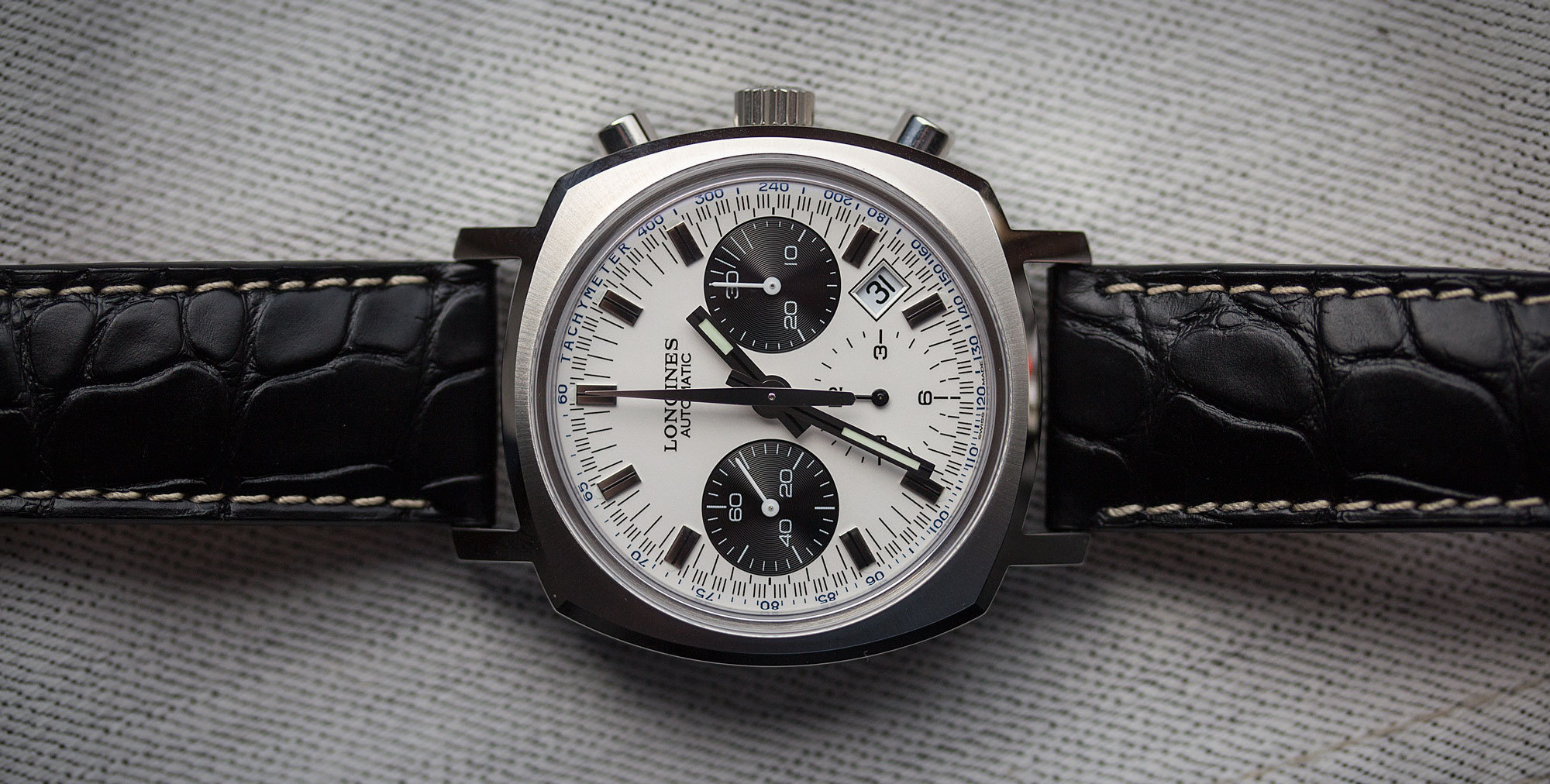










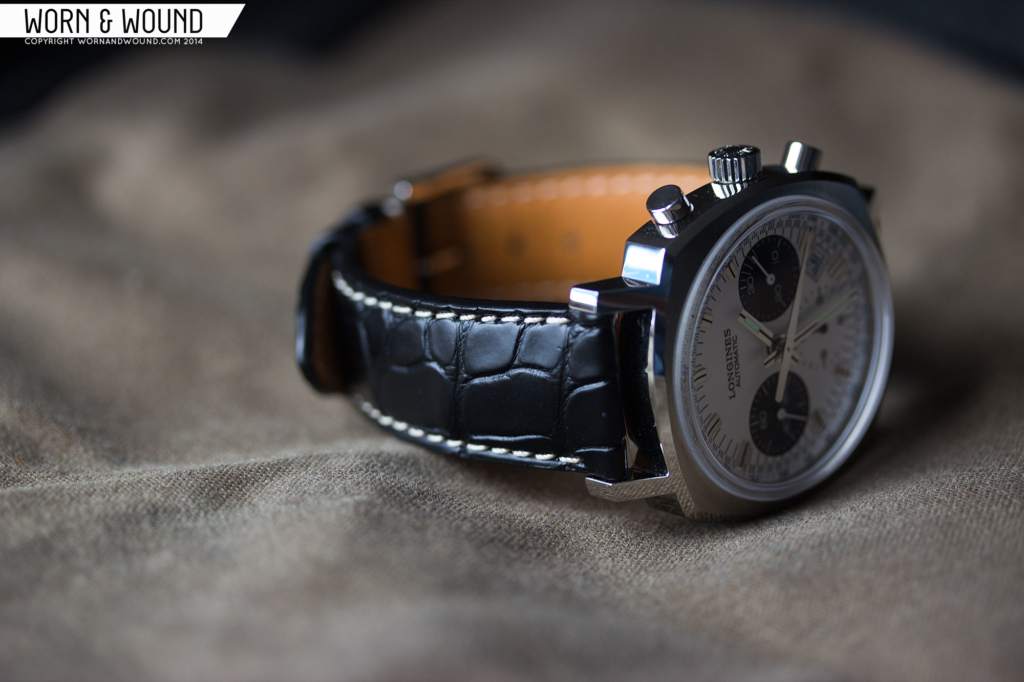


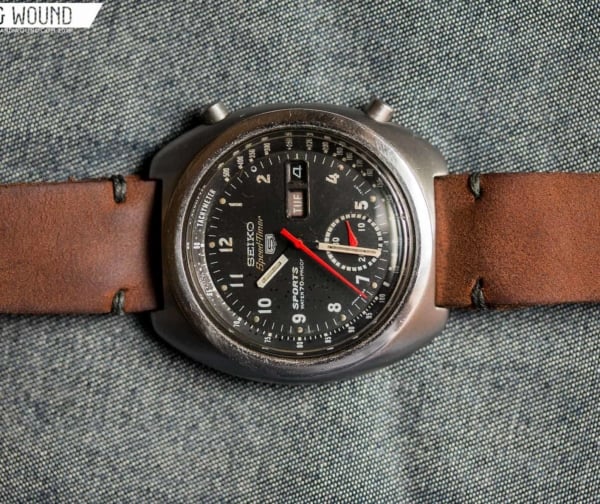
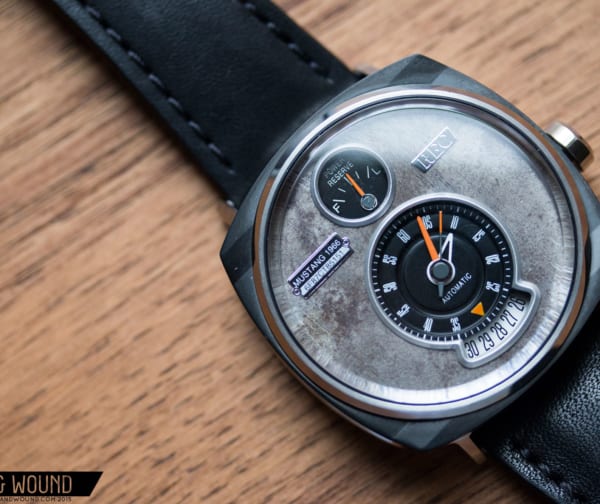

I agree that the date window is unwanted. However, this is a beautiful watch. I love that panda dial. Props for very good execution.
Longines is on fire with their Heritage pieces. Looks awesome. Great review, Zach!
Thanks Dennis!
This has been on my short list and I kinda forgot about it till I saw this review. I’m really surprised this watch hasn’t gotten more attention. This will be my next purchase.
Is it just me or are the reviewed watches getting more expensive? Thanks Obama.
What would be a realistic street price for this watch?
Just got a quote for around $2400. Not bad!
Yeah, I found the Heritage chrono (same movment, different case, similar MSRP) for under $2500 at an AD. So I think that should be your top end.
I don’t think Longines or Tissot. They are ruining these “re-editions”.
Meant to say they don’t know how to make a watch under 40mm. Not sure what happened there.
Bigger movements need bigger cases. I’m happy this case is slightly bigger. Other cases out there for cushions are up to 44mm
looks good. Would like to see some real world shots of the black dial version. nice review and pics.
Good looking watch, and well priced.
Once again, awesome review Zach! It might be a fairly expensive piece but it’s all about the “money:what-you-get” ratio in worn&wound. I think the price is fair enough for the watch that you get. Like the way you match your outfit with the look of the watch!
What is the -/+ variance in seconds this movement loses or gains each day? Is the movement Standard, Elaboré, Top, or Chronometer grade since it is made by ETA?